The Chugoku-Shikoku region is known for its diverse fruit production, blessed with rich nature and a mild climate. This time, we’ll introduce some representative fruits from this area.
– Table of Contents –
1. Hiroshima Lemons 🍋
2. Okayama White Peaches 🍑
3. Yamaguchi Mandarin Oranges 🍊
4. Tottori Pears 🍐
5. Shimane Delaware Grapes 🍇
6. Ehime Mandarin Oranges 🍊
7. Kochi Pomelos 🍊
8. Tokushima Sudachi Citrus 🍋
9. Kagawa Kiwi 🥝
1. Hiroshima Lemons
Harvest Season: October to April
Main Production Areas: Hiroshima Prefecture (Kure City, Onomichi City, Osakikamijima Town)
Characteristics:
– Thin skin with abundant juice
– High sugar content with gentle acidity and refreshing aroma
– Rich in Vitamin C
– “Green lemons” known for their fresh scent and crisp tartness
Recommended Ways to Enjoy:
– In lemon sour cocktails or lemonade
– Sliced as a garnish for fish dishes
– As an ingredient in lemon cakes or tarts

Suger’s tweet:
Hiroshima lemons aren’t just sour, you know! When you bite into them, you can really taste the sweetness. They’re the best! After eating my favorite fried foods, I love to nibble on a lemon. It helps break down the oils and brings out the lemon’s sweetness. It’s all good! You’ve got to try it.
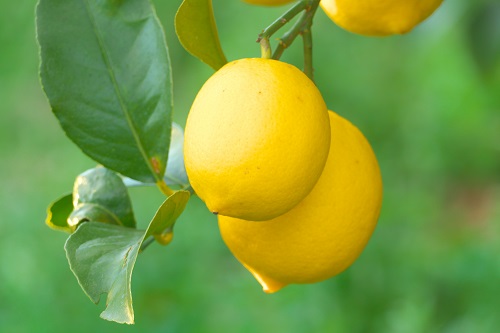
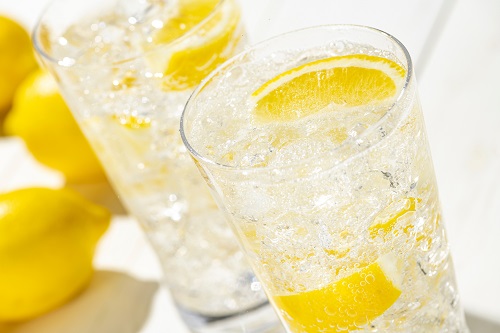
2. Okayama White Peaches
Harvest Season: Mid-July to mid-August
Main Production Areas: Okayama Prefecture (especially Kurashiki City, Okayama City, Akaiwa City)
Characteristics:
– Elegant white color and smooth texture
– Strong sweetness with abundant juice
– Low in fiber, with a melt-in-your-mouth texture
– Rich aroma and mellow flavor
Recommended Ways to Enjoy:
– Savor them as they are for a luxurious treat
– As a topping for yogurt or ice cream
– White peach compote or jam

Strong‘s tweet:
White peaches have such a smooth texture and a refined sweetness. They’re truly delicious! Peaches might be my favorite fruit, and the ones from Okayama Prefecture are absolutely exquisite. Once I start eating them, my plate’s empty in three minutes. I bet everyone’s the same, right?
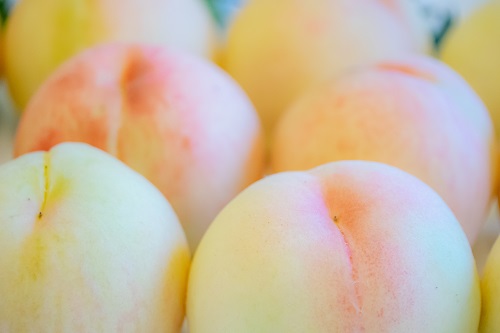
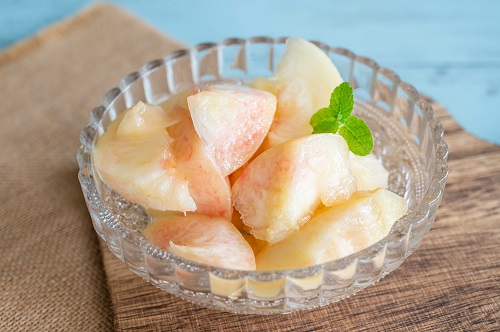
3. Yamaguchi Mandarin Oranges
Harvest Season: Late September to mid-February
Main Production Areas: Yamaguchi Prefecture (Suo-Oshima Town, Yanai City)
Characteristics:
– Soft, easy-to-peel skin
– Good balance of sweetness and acidity
– Various varieties including “Shimasodachi” and “Yumehoppe”
Recommended Ways to Enjoy:
– Peeled and eaten fresh
– Made into orange juice or jelly
– Orange peel marmalade

Suger‘s tweet:
The real joy is in comparing different varieties. I’d recommend “Shimasodachi” for its perfect balance of sweetness and acidity. “Setomi” and “Yumehoppe” are delicious too, but… well, they’re all so good it’s hard to choose!
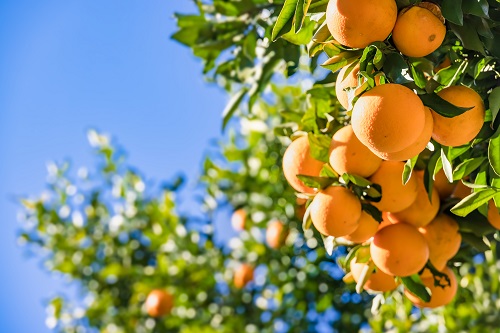
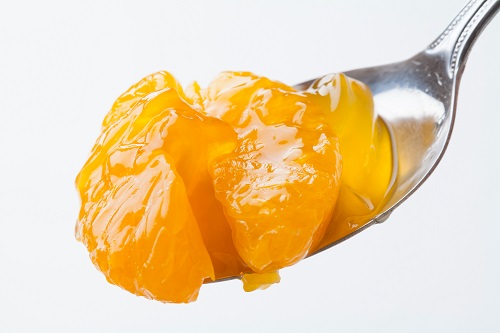
4. Tottori Pears
Harvest Season: Early August to late September
Main Production Areas: Throughout Tottori Prefecture
Characteristics:
– Juicy with a crisp texture
– Good balance of sweetness and acidity
– High juice content with a refreshing taste
– Long shelf life, popular as a gift
Recommended Ways to Enjoy:
– Eat fresh as is
– Use in pear tarts or pies
– Add to salads for a refreshing flavor

Strong‘s tweet:
I buy a whole box of Tottori’s Nijisseiki pears every year. They’re juicy, sweet, and refreshing – simply the best. They’re great for sharing too, though Sugar always helps himself to quite a few… On a hot day, they’re not only delicious but also hydrating and seem to cool you down. It’s a win-win-win situation!
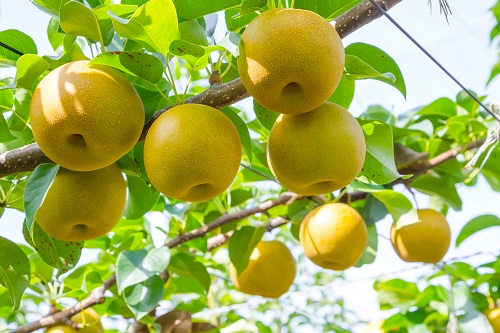
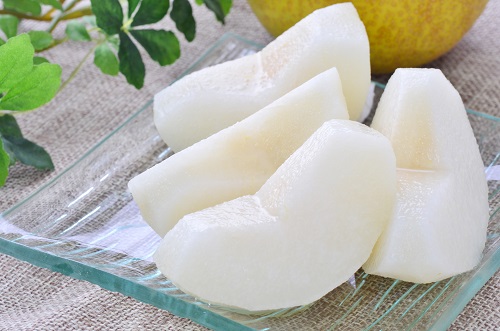
5. Shimane Delaware Grapes
Harvest Season: Late April to late July
Main Production Areas: Shimane Prefecture (Izumo City, Masuda City, Ota City, Hamada City, Unnan City, Yasugi City)
Characteristics:
– Small and seedless
– Balanced flavor with strong sweetness and moderate acidity
– Edible skin
– Pleasant aroma and light mouthfeel
Recommended Ways to Enjoy:
– Eat as is
– Make grape juice or wine
– Use in jams or sorbets

Suger‘s tweet:
I could eat these mindlessly forever. Even if someone told me to stop, I couldn’t! It’s not just the sweetness; that perfect tang is irresistible! I might only stop when my hand gets tired from eating so many.
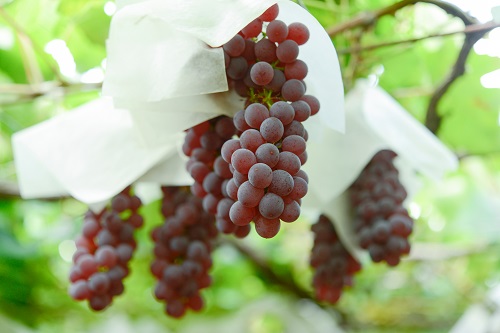
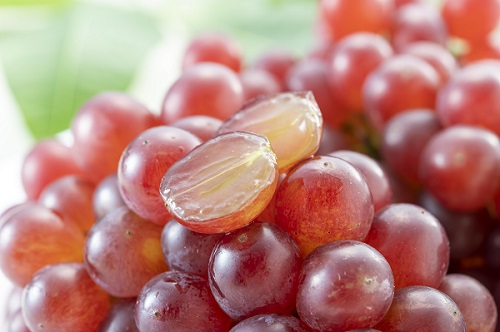
6. Ehime Mandarin Oranges
Harvest Season: Mid-October to late January
Main Production Areas: Ehime Prefecture (Uwajima City, Yawatahama City)
Characteristics:
– Balance of sweetness and acidity varies with the harvest time
– Rich sweetness with a refreshing aroma
– Thin, easy-to-peel skin
Recommended Ways to Enjoy:
– Peel and eat fresh
– Make into orange jelly or jam
– Add to yogurt for breakfast

Strong‘s tweet:
When it comes to mandarin oranges, Ehime is the place. (Though Sugar mentioned Yamaguchi’s.) Have you tried Ehime’s rare premium variety, “Kanpei”? It’s been featured on TV. It’s super sweet with a great texture – a delicious, high-end mandarin! You’re missing out if you don’t try it at least once in your life.
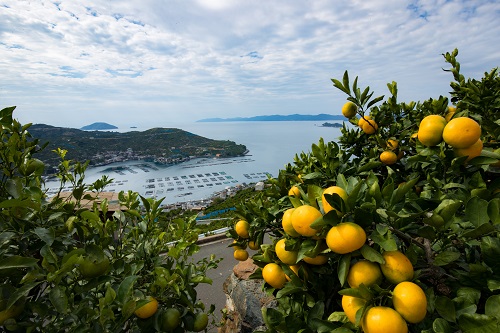
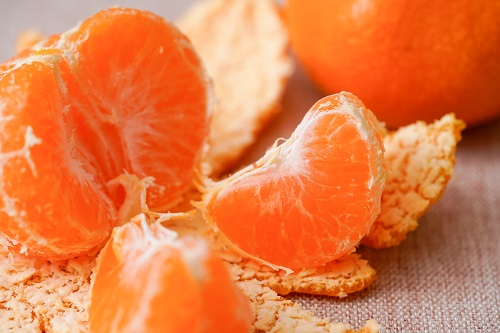
7. Kochi Pomelos
Harvest Season: December to mid-January
Main Production Areas: Kochi Prefecture (Sukumo City, Konan City, Tosa City)
Characteristics:
– Large fruit with abundant flesh
– Slight bitterness with elegant sweetness and refreshing acidity
– Large fruit with thick peel
– Rich in Vitamin C, high health benefits
Recommended Ways to Enjoy:
– Eat the flesh as is
– Squeeze for fresh juice
– Squeeze for fresh juice

Suger‘s tweet:
Ever heard of pomelo? It’s a large citrus fruit with a thick peel that’s a bit of a challenge to remove. But once you manage to peel it, you’re rewarded with the most delicious flesh! It has a unique flavor, mixing a refreshing bitterness with sweetness, and it’s so juicy. Just thinking about it makes me want to eat one.
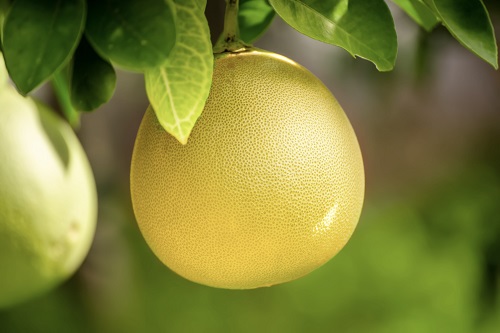
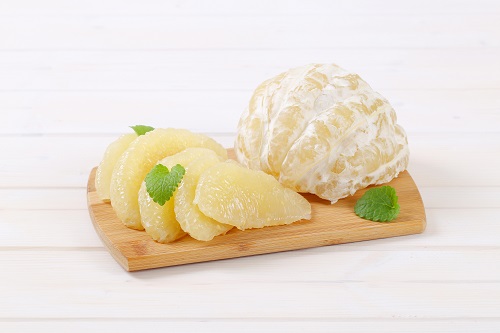
8. Tokushima Sudachi Citrus
Harvest Season: July to August
Main Production Areas: Tokushima Prefecture (Kamiyama Town, Anan City, Tokushima City, Sanagochi Village)
Characteristics:
– Small, green citrus fruit
– Sharp, tangy flavor with a refreshing aroma
– Widely used as a flavoring and garnish in cooking
Recommended Ways to Enjoy:
– Squeeze over grilled fish or chilled tofu
– Use as a seasoning in sudachi vinegar
– Ingredient in sudachi juice or chu-hai cocktails

Strong’s tweet:
Sudachi might not be the star of the show, but it’s unbeatable as a supporting player in dishes. First off, it looks refreshing and adds a nice color. It goes well with fish and noodles. The juice is good too. When you don’t have much appetite, adding some sudachi to your udon makes it go down smoothly!
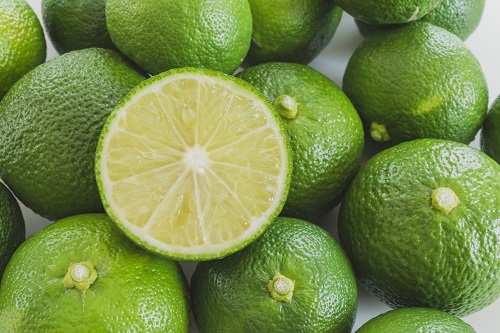
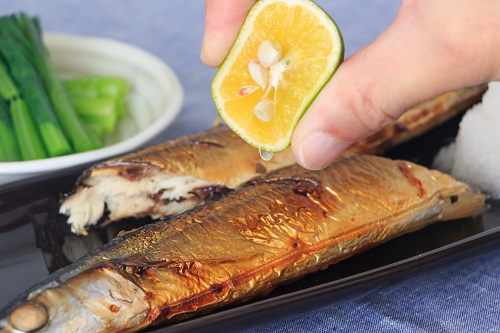
9. Kagawa Kiwi
Harvest Season: Late October to early November
Main Production Areas: Kagawa Prefecture (Takamatsu City, Zentsuji City, Mitoyo City)
Characteristics:
[Koryoku]: Rich sweetness with a refreshing flavor
[Sanuki Gold]: Golden flesh with 3 times the normal Vitamin C content
[Sanuki Angel Sweet]: Low acidity with an elegant sweetness
[Kosui]: Bite-sized with almost no protein-dissolving enzymes
[Sanuki KiwikoⓇ]: Good balance of acidity and sweetness
Recommended Ways to Enjoy:
– Cut in half and eat as is
– Use in fruit salads
– Make kiwi jam or smoothies

Sugar’s tweet:
All kiwis are delicious, but my top pick would be Sanuki Gold. It looks beautiful and tastes great. I hear it’s high in vitamin C and good for your skin, but for me, it’s all about the taste!
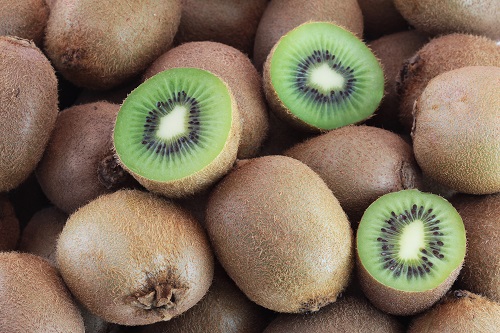
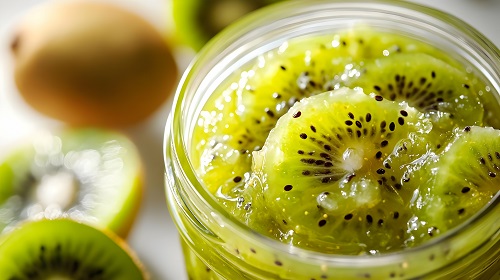
These specialty fruits from the Chugoku-Shikoku region are cultivated using methods suited to each area’s climate and soil, boasting unique flavors and exceptional quality. While enjoying them in season at their place of origin is ideal, they’re also popular as local specialties and souvenirs. We encourage you to try various ways of enjoying these fruits according to the seasons.


